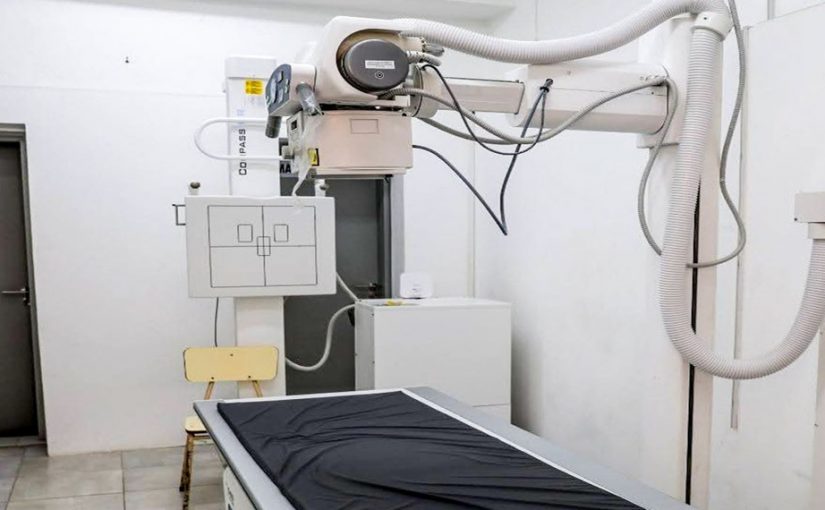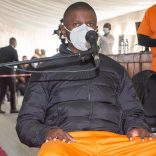'Japanese First' party emerges as election force with tough immigration talk
Mozambique: Newly installed X-ray machine breaks down in Inhambane Provincial Hospital

Photo: O País
The promise of modernizing diagnostic services at Inhambane Provincial Hospital was short-lived, with the new X-ray machine installed in May of this year already out of service for almost two months.
The breakdown forces patients to travel more than 30 kilometres to Jangamo District Hospital for X-rays, overloading the health facility there and increasing wait times.
For many patients, this breakdown means an additional sacrifice. People who arrive at the provincial hospital seeking a quick and accessible diagnosis end up facing a veritable marathon.
Besides the distance, there are transportation costs that most cannot afford, not to mention the physical strain on patients, who often arrive weakened. There are cases of patients who cancel the exam because they cannot afford the trip, compromising clinical follow-up and putting their own lives at risk.
The X-ray machine, acquired as part of the effort to modernize hospital units and reduce unnecessary transfers, represented a significant advance in care. With the premature breakdown, the situation returned to the same old story: long lines, delays in diagnosis, and a system under pressure.
According to the Secretary of State in Inhambane, Benedita Lopes, the breakdown is not due to serious technical problems, but rather to difficulties in handling the equipment by local technicians.
The situation, according to authorities, has already been reported to the Ministry of Health, which has promised to restore service in the coming days.
During her visit to the hospital, the Secretary of State explained in detail how the breakdown occurred. According to Benedita Lopes, the X-ray machine malfunctioned after technicians attempted to perform examinations other than those initially scheduled, which caused a malfunction in the electronic system.
“When the technicians came to install the machine, they stayed here for a week. They set up the equipment at the provincial hospital, and during that time, the induction process for our technicians took place. Everything indicated that they had a complete understanding of how it works, but the truth is that the machine is not simple. It is quite sophisticated equipment, and at one point, when they tried to perform other types of tests that were not planned, they were unable to do so. Because it is a fully electronic system, the computer stopped responding and eventually crashed,” Lopes explained.
The governor acknowledges that the problem has seriously affected the hospital’s response capacity and guarantees that all mechanisms have been activated to achieve a quick solution.
“We immediately reported this to the Ministry of Health. They confirmed that they will send specialized technicians to restore the machine’s operation. The biggest challenge is that these technicians are all in Maputo and serve the entire country, which makes immediate mobilization difficult. However, we are doing everything we can to ensure that this machine is back in operation as soon as possible. We were promised that the technicians would arrive by the end of this week. We will wait,” said the secretary of state.
With the X-ray machine out of order, patients requiring X-rays are being sent to the Jangamo District Hospital, located about 30 kilometres from the provincial capital. The mass transfer of patients has placed additional pressure on the capacity of the health facility, which now serves patients from five different districts.
This pressure is already reflected in wait times that can triple, according to reports from health professionals. On busy days, patients are forced to wait more than six hours for an examination that should be quick and simple. For more serious cases, such as road accidents and open fractures, every minute counts, and the distance to Jangamo can be crucial for recovery or, in extreme situations, the patient’s survival.
Despite the severity of the problem, authorities assure that there will be no need to purchase new equipment, as the failure can be corrected by the supplier’s technicians, who will also reinforce the training of local operators to prevent similar failures in the future.
“We want to ensure that this situation does not happen again. This equipment has cost the state a lot of money, and we cannot allow handling errors to cause service interruptions. Therefore, in addition to repairs, we will insist on more in-depth training for technicians so that they have complete command of the machine,” concluded Bendita Lopes.
The government expects the machine to return to service this month [August], restoring normalcy to Inhambane Provincial Hospital and reducing pressure on Jangamo.
The failure raises a broader debate about the management of hospital technology in the country.
This isn’t the first time a sophisticated machine has become inoperable due to lack of maintenance or difficulties using it. Similar situations have been reported in recent years in provinces such as Nampula and Sofala, where CT and ultrasound equipment have been out of order for months due to a lack of qualified technicians or replacement parts.
For patients, each breakdown represents more than a setback: it means delayed diagnosis, prolonged suffering, and, in many cases, risk of death. Experts argue that equipment acquisition must be accompanied by robust training and preventive maintenance plans to ensure that millions in investment do not ultimately benefit anyone.
Meanwhile, families remain at the mercy of a system that often seems to forget that time is life. When technology fails, distance can be the difference between survival and never returning home.












Leave a Reply
Be the First to Comment!
You must be logged in to post a comment.
You must be logged in to post a comment.